Mexico has amazing natural beauty, and especially, the waterfalls are the prettiest. The waterfalls in Mexico present the country’s amazing ecological diversity. These range from towering cascades concealed in mountain forests to turquoise streams that flow through limestone canyons. However, each region has its own unique experience. Some waterfalls are perfect for hiking or adventure, and other waterfalls are perfect for swimming or enjoying nature. These waterfalls are located in the lush jungles of Chiapas or rugged cliffs of Nuevo León, offering scenic beauty and outdoor exploration.
10 Best Waterfalls In Mexico
Here are ten remarkable waterfalls in Mexico with each having its own unique vibe, cool rock formations, and seasonal beauty:
1. El Chiflón Waterfalls, Chiapas
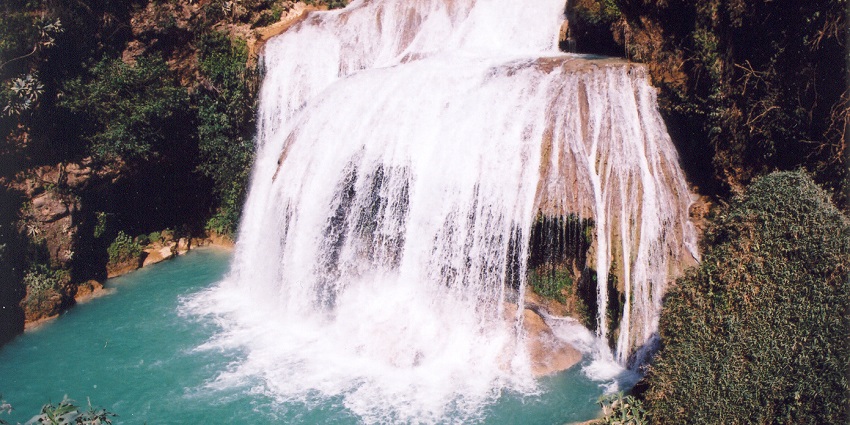
Photo: Eduardo Manchon / Wikimedia Commons
This waterfall is one of the most visited locations in Chiapas. This set of waterfalls is made possible by the pristine blue water and verdant surroundings. The highest and most famous of the falls is Velo de Novia, sometimes called Bride’s Veil, which reaches a height of up to 120 metres. It is within a protected eco-park with walking trails, viewing platforms and picnic areas. Offering a gentle hike to the top with amazing views on the way, visitors can enjoy it. As one of the most scenic waterfalls, El Chiflón offers a mix of adventure and relaxation. You’ll also find local wildlife and tropical plants that add to the beauty of the landscape.
Location: Chiapas, Mexico
Best Time To Visit: November to May
2. Cascada Tamúl, San Luis Potosí
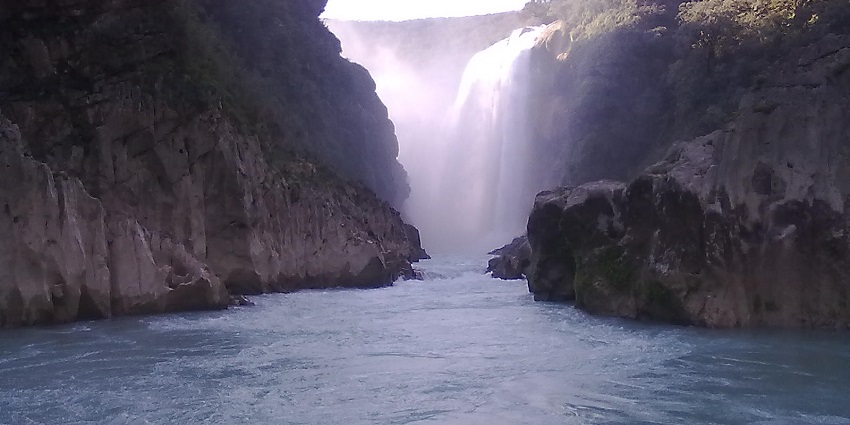
Photo: Sarkel / Wikimedia Commons
Cascada Tamúl is a beautiful waterfall in the region of Huasteca Potosina, San Luis Potosí. It drops about 106 meters into the clear waters of the Tampaón River. There is simply an unbelievable view, surrounded by thick jungle and rocky cliffs. A rowing boat is the most common way to reach the waterfall, and you will truly enjoy the journey that much more. The waterfall is its strongest and most impressive during the rainy season. Nearby, there are caves and trails to explore, adding more to the experience for outdoor lovers and families alike.
Location: San Luis Potosí, Mexico
Best Time To Visit: July to November
3. Cascada Basaseachi, Copper Canyon
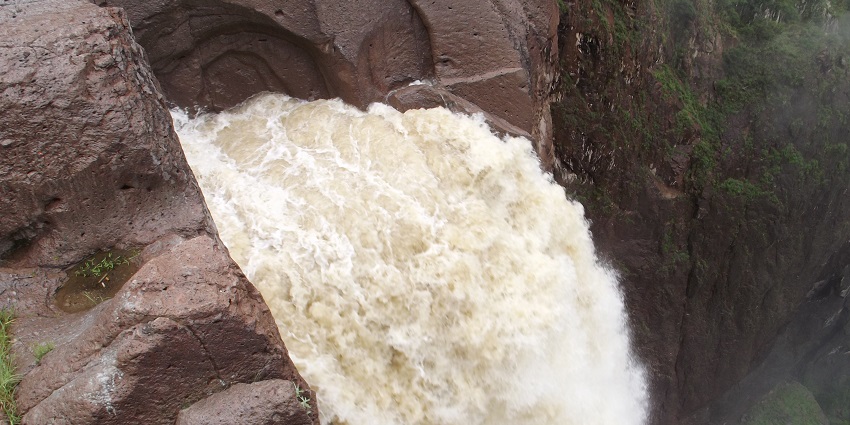
Photo: Armando185 / Wikimedia Commons
Cascada Basaseachi is a magnificent, towering waterfall in the beautiful region of the Copper Canyon in northern Mexico. Plus, it’s one of the tallest permanent waterfalls in the country, standing at 246 meters. It’s in Basaseachic Falls National Park, a park that is quite peaceful with forested mountains and deep canyons. Hiking trails enable tourists to go to several vantage spots for a glimpse of the falls and the surrounding area. Cascada Basaseachi draws hikers, photographers, and travellers who love nature and scenic walks or beautiful views.
Location: Chihuahua, Mexico
Best Time To Visit: July to October
4. Hierve El Agua, Oaxaca
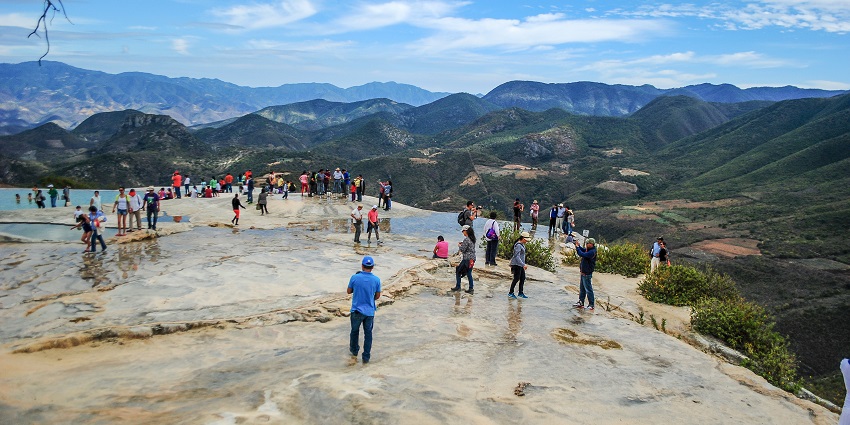
Photo: ProtoplasmaKid / Wikimedia Commons
The Hierve el Agua in the mountains of Oaxaca is one of Mexico’s most unique natural wonders. In contrast to a normal waterfall, it contains petrified cascades that look like frozen waterfalls. These have been there for thousands of years as the mineral-rich spring water worked its way down the cliffside. Not only are these pools visually stunning but they are safe for swimming. The site is surrounded by dramatic mountain scenery, and the views are peaceful, with natural infinity pools that attract both locals and tourists. Short hikes and learning about the area’s geology and cultural history are also available for visitors.
Location: Oaxaca, Mexico
Best Time To Visit: October To March
5. Cascada De Agua Azul, Chiapas
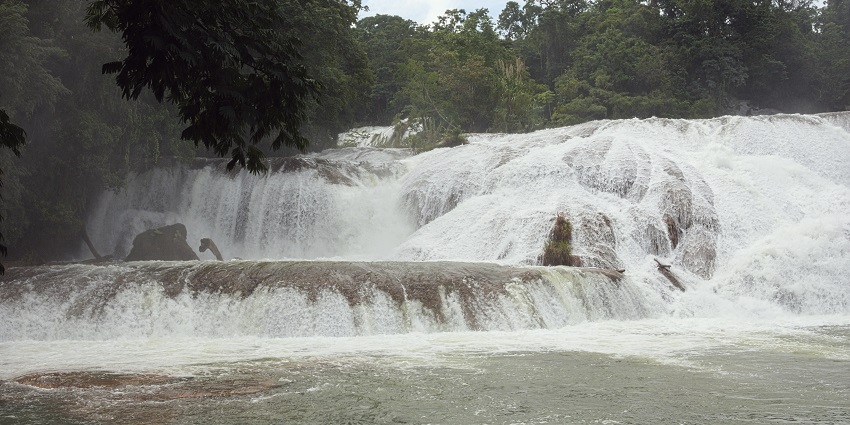
Photo: Carlos Valenzuela / Wikimedia Commons
The breathtaking Cascada de Agua Azul waterfalls are situated in southern Mexico’s verdant Chiapas area. Known for their bright turquoise colour, these falls get their striking shade from the high mineral content in the water. The name translates to “Blue Water Falls,” and they live up to it beautifully, especially during the dry season when the water is clearest. Surrounded by jungle and limestone rocks, the area is a peaceful escape into nature. Visitors can explore the falls through a network of paths and bridges, with several spots ideal for swimming or relaxing.
Location: Chiapas, Mexico
Best Time To Visit: November To May
6. Salto De Eyipantla, Veracruz
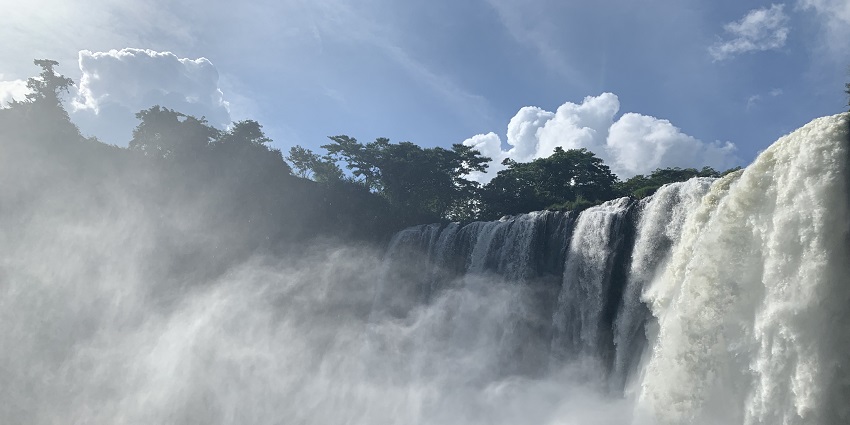
Photo: Didaskalia edu / Wikimedia Commons / Image For Representation Only
The tropical area of Los Tuxtlas in Veracruz is home to the strong and magnificent Salto de Eyipantla waterfall. Falling from a height of around 50 metres and stretching 40 metres wide, it creates a dramatic curtain of water surrounded by lush greenery. The waterfall is fed by the Río Grande de Catemaco and is considered sacred in local Totonac culture. It is reached by a stairway of more than 200 steps that takes tourists to various vantage points. Among the impressive waterfalls in Mexico, Salto de Eyipantla stands out for its cultural importance and raw natural beauty.
Location: Veracruz, Mexico
Best Time To Visit: June To January
7. Cascada Tulimán, Puebla
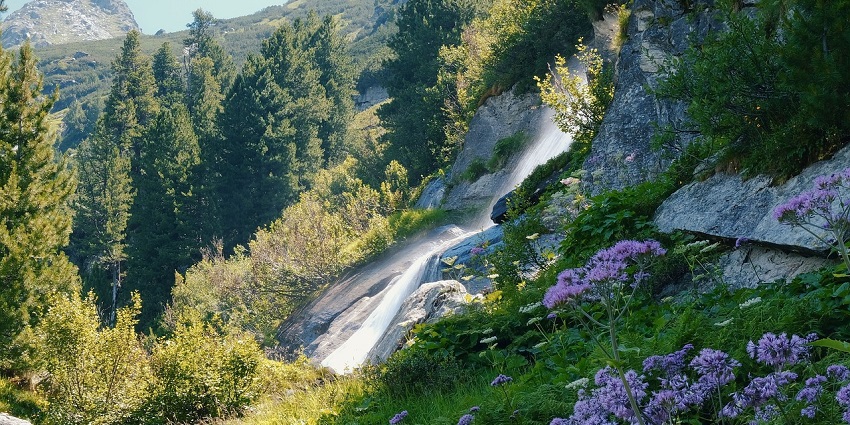
Photo: shogun / Pixabay / Image For Representation Only
Cascada Tulimán is situated in the Sierra Norte area of Puebla, about 8 kilometres from Zacatlán. This multi-tiered waterfall reaches a height of approximately 300 meters, ranking it among the tallest in Mexico. The falls consist of three big sections, and the highest fall is approximately 250 metres in height. It’s located within the Tulimán Ecotourism Park, which also has a natural canyon, volcanic rock formations, and mineralised springs. Guests can take defined trails to several viewing points offering unobstructed views of the falls. The park features a 150-metre-long suspension bridge that spans a wooded ravine.
Location: Zacatlán, Puebla, Mexico
Best Time To Visit: June To October
8. Cascada Minas Viejas, San Luis Potosí

Photo: Juan Carlos Fonseca Mata / Wikimedia Commons
This waterfall features a vertical drop of approximately 50 metres and divides into two separate streams as it drops into limestone basins. The water is vibrant turquoise in colour as a result of the dissolved calcium content, particularly in the dry season. The area has travertine terraces as well as flat, shallow pools perfect for swimming. A brief trail takes one to a secondary viewpoint with an elevated view of the falls. The waterfall flow is most powerful during the rainy season, but water clarity is optimal from late autumn to spring.
Location: El Naranjo, San Luis Potosí, México
Best Time To Visit: November To April
9. Cascada Agua Blanca, Tabasco
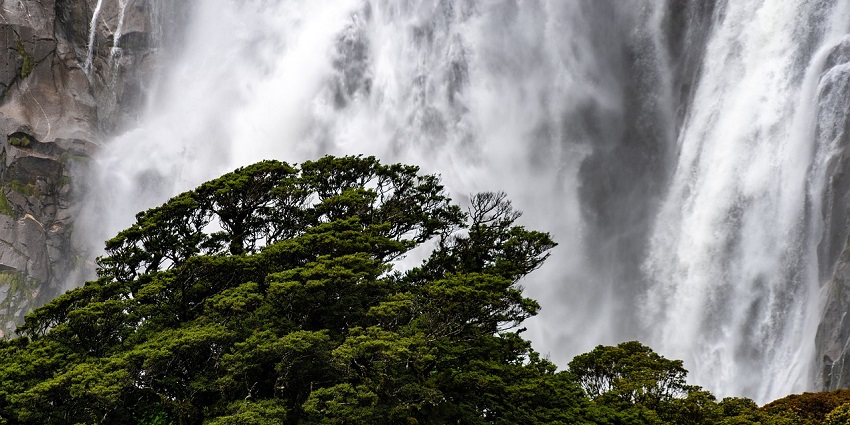
Photo: psaudio / Pixabay / Image For Representation Only
Cascada Agua Blanca lies within the Agua Blanca State Park, close to Macuspana municipality in Tabasco. The waterfall is part of the foothills of the Sierra Madre de Chiapas and is a collection of short cascades that drain into limestone pools. The area is dominated by dense tropical rainforest and high biodiversity. One of the main attractions is a local cave system called Grutas de Agua Blanca. The caves have underground streams and unique rock formations. The park features picnic sites, nature trails, and educational signs regarding the local ecology.
Location: Macuspana, Tabasco, Mexico
Best Time To Visit: November To March
10. Cascada Cola De Caballo, Nuevo León
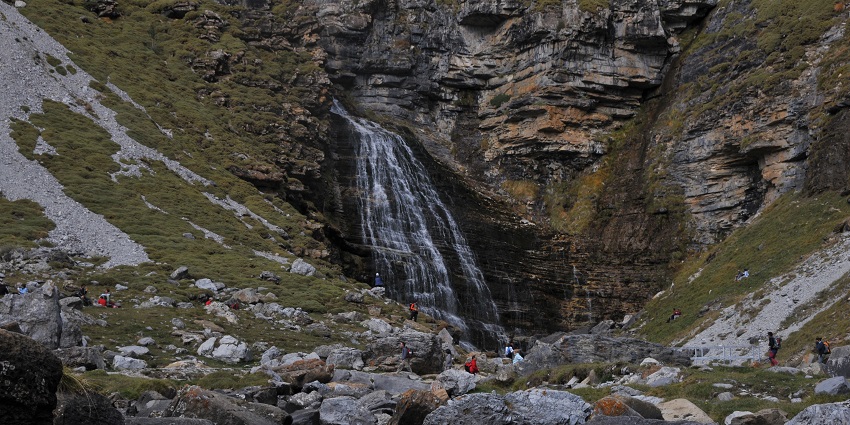
Photo: Manuel Velazquez / Wikimedia Commons / Image For Representation Only
Cascada Cola de Caballo is located in Villa de Santiago, just 40 minutes from Monterrey, inside Cola de Caballo Natural Park. The waterfall is 25 metres tall and supplied by runoff from the Sierra Madre Oriental. Its horsetail form provides it with both its name and its aesthetic appeal. The area is readily accessible by a paved walkway from the entrance, with railings and benches throughout. The falls are ringed by wooded land with pine and oak species, characteristic of the upper elevations of Nuevo León. The park also has zip-lining and horseback riding.
Location: Villa de Santiago, Nuevo León, México
Best Time To Visit: September To April
Tourists can find diverse waterfall experiences in Mexico, from tremendous mountain forest waterfalls to peaceful pools located in tropical lowlands. Various waterfalls in Mexico are available through eco-parks and guided trails so visitors can experience them as day trip destinations. The opportunities at these sites include hiking, as well as swimming and taking photographs. With TripXL, plan to visit and discover Mexico’s most spectacular waterfalls.
Cover Photo: lecreusois / Pixabay / Image For Representation Only


 WhatsApp
WhatsApp
 Twitter
Twitter









